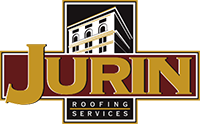3 Problems Caused by Trapped Moisture in Roofing Systems
Is the roofing system on your building performing to your expectations? Have you considered the condition of the roof deck under the roof system?
When roof leaks occur, there are many times when the leaks go unnoticed for an extended period of time. Insulation in the roof system typically soaks up moisture prior to entering the building interior. The leak saturates the insulation and then shows up on the interior of the building.

Unfortunately, by this point, the integrity of the roof insulation has been compromised. Leaking conditions can have severe effects on the roofing system as well as other building components. Below are three potential problems relating to trapped moisture in your roof system.
#1 – HVAC/Energy Related Issues
Wet insulation can have a domino effect on several building components. Moisture trapped in the roofing system will reduce the R-value of the insulation. This can increase energy costs associated with maintaining the interior of the building. Decreased R-values also cause the HVAC equipment to work harder reducing life expectancy of the HVAC system components.
This is not only a concern with air-conditioning expenses which increase in the hot and humid summers. Expenses related to heating a building can increase as well. Insulation that becomes wet has a reduced R-value. As a result, when the extremes occur the insulation can no longer protect the interior of the building from the exterior temperatures.

#2 – Further Damage to Roof System
Did you know that just having moisture within your roof can further damage the roofing system? Further damage to your building’s most key waterproofing element, the roof, can occur as a result of moisture.
As water heats within the wet insulation it begins to turn to water vapor. The vaporized water expands creating pressure within the roof system. If the system is open to the interior of the building, the vapor will push into the building envelope and condensate showing up as a roof leak. If the water vapor cannot escape, it will cause blisters in the roof system.
As the pressure increases it will find the path of least resistance and place pressure on the system causing openings to occur. Once water vapor can get out, water can enter the system and you have a new roof leak.

#3 – Roof Deck Concerns
And last but not least, the roof deck system. Although rare and unlikely, deck failures can occur. Deck failures can be caused by excessive weight, typically as a result of the weight associated with standing water. Decking failures can also occur as the result of storm damage from high winds. Roof decks can deteriorate over time leading to failures.
Many buildings incorporate metal decking as the roof deck including shopping centers, big-box stores and similar buildings. The next time you enter a retail store look up. If there is no drop ceiling, chances are you will be looking at a metal deck. The metal decking you see above your head serves as the support for the roof assembly.
The metal roof deck is typically galvanized coated or painted steel. The galvanized coating is just that, a coating applied to steel. Steel is a ferrous metal that is highly susceptible to corrosion. Many assume that the coating is sufficient to protect the steel from rusting. Unfortunately it isn’t.
Now look back up at the decking. Do you see fasteners and steel reinforcement throughout? All of these locations at a minimum have been voided of this protective galvanized coating. Screws penetrating the deck and welds at the bar joists are most susceptible to corrosion. Other areas not visible from beneath may have been damaged during the construction of the building.

All of these locations have a higher likeliness for premature corrosion. Now introduce moisture from roof leaks to the ferrous metal and the result is rust. Rust eats away at the structural integrity of the metal deck.
How Do I Prevent These Issues From Occurring?
It is most important that a bi-annual roof maintenance plan is implemented in order to identify potential leak sources before they become bigger problems. A professional roofing contractor or roofing consultant should review your roof system on a regular basis. Experienced professionals can check areas that are locations of common weaknesses in the roof assembly and identify problems early on before they cause damage to your roof and the structure of the building.
An additional option is to perform an infrared scan of the roof assembly. An infrared roof inspection will help identify anomalies and areas of potentially trapped moisture. Removal and replacement of wet roof insulation will maintain R-values, improve energy efficiency, extend roof life, and prevent pre-mature degradation of roof substrates.






